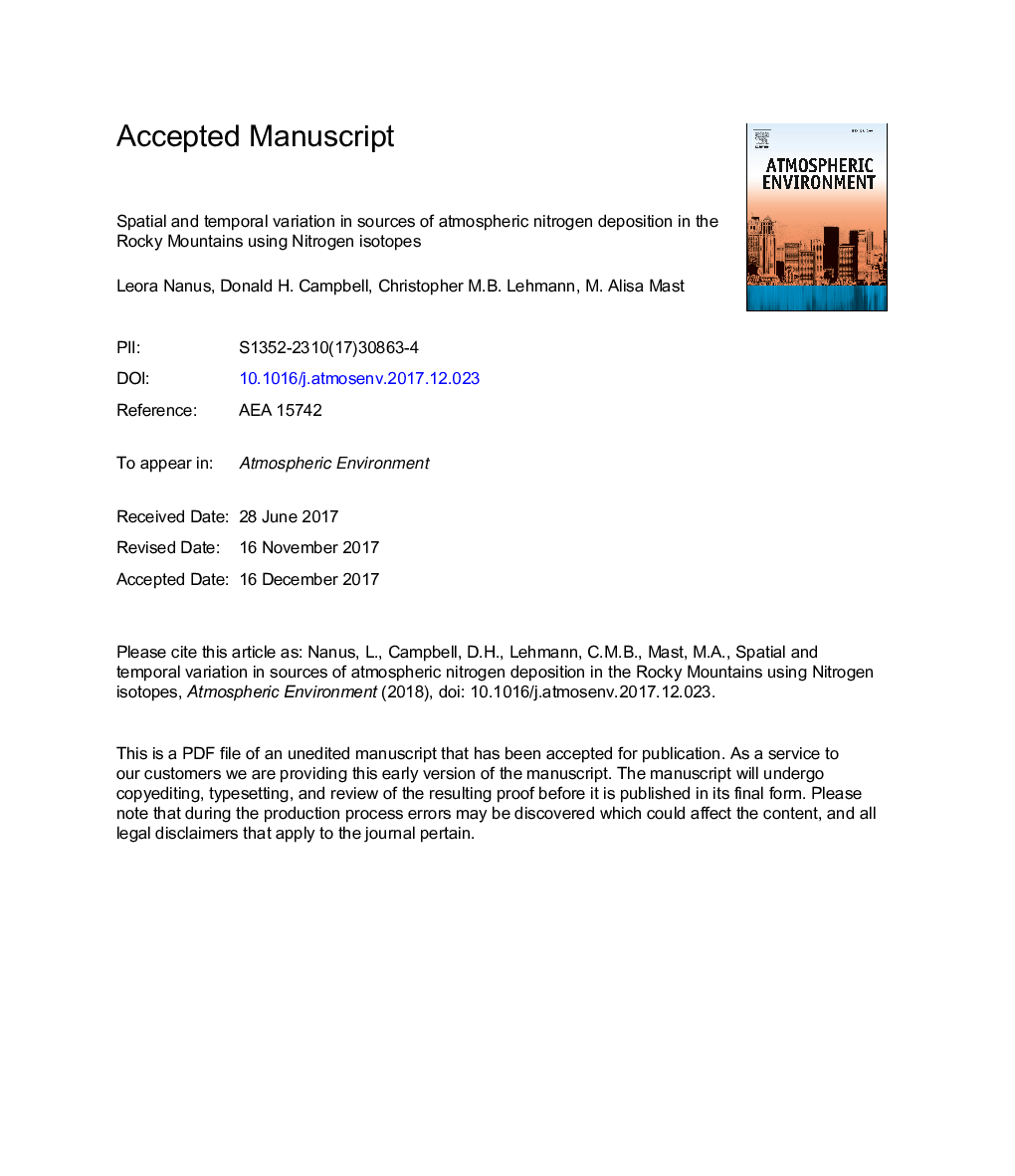| Article ID | Journal | Published Year | Pages | File Type |
|---|---|---|---|---|
| 8864123 | Atmospheric Environment | 2018 | 39 Pages |
Abstract
Variation in source areas and source types of atmospheric nitrogen (N) deposition to high-elevation ecosystems in the Rocky Mountains were evaluated using spatially and temporally distributed N isotope data from atmospheric deposition networks for 1995-2016. This unique dataset links N in wet deposition and snowpack to mobile and stationary emissions sources, and enhances understanding of the impacts of anthropogenic activities and environmental policies that mitigate effects of accelerated N cycling across the Rocky Mountain region. δ15NâNO3â at 50 U.S. Geological Survey Rocky Mountain Snowpack (Snowpack) sites ranged from â3.3â° to +6.5â°, with a mean value of +1.4â°. At 15 National Atmospheric Deposition Program (NADP)/National Trends Network wet deposition (NADP Wetfall) sites, summer δ15NâNO3â is significantly lower ranging from â7.6â° to â1.3â° while winter δ15NâNO3â ranges from â2.6â° to +5.5â°, with a mean value of +0.7â° during the cool season. The strong seasonal difference in NADP Wetfall δ15NâNO3â is due in part to variation in the proportion of N originating from source regions at different times of the year due to seasonal changes in weather patterns. Snowpack NO3â and δ15NâNO3â are significantly related to NADP Wetfall (fall and winter) suggesting that bulk snowpack samples provide a reliable estimate at high elevations. Spatial trends show higher NO3â concentrations and δ15NâNO3â in the Southern Rocky Mountains located near larger anthropogenic N emission sources compared to the Northern Rocky Mountains. NADP Wetfall δ15NâNH4+ ranged from â10â° to 0â°, with no observed spatial pattern. However, the lowest δ15NâNH4+(â9â°), and the highest NH4+ concentration (35 μeq/L) were observed at a Utah site dominated by local agricultural activities, whereas the higher δ15NâNH4+ observed in Colorado and Wyoming are likely due to mixed sources, including fossil fuel combustion and agricultural sources. These findings show spatial and seasonal variation in N isotope data that reflect differences in sources of anthropogenic N deposition to high-elevation ecosystems and have important implications for environmental policy across the Rocky Mountain region.
Related Topics
Physical Sciences and Engineering
Earth and Planetary Sciences
Atmospheric Science
Authors
Leora Nanus, Donald H. Campbell, Christopher M.B. Lehmann, M. Alisa Mast,
